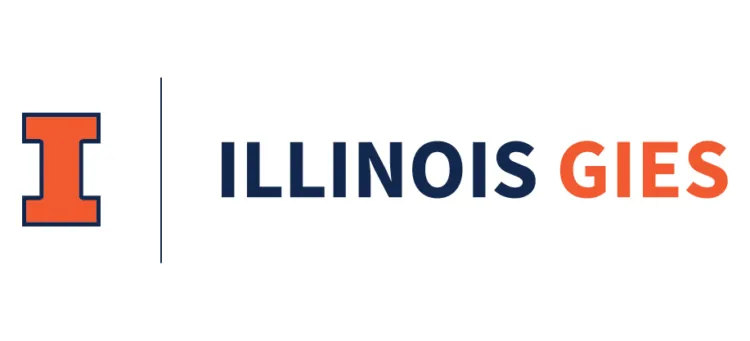
Creative Commons photo
These days, college students are savvier than ever. They grew up with the internet and technology and it’s not uncommon for students to develop apps and launch companies before they can legally vote in an election. And while the millennial generation was dumped into one of the worst job markets in recent history, Generation Z college graduates are enjoying a frothy market with low unemployment rates. The elephant in the room when it comes to college education is, of course, the fact wages for college graduates have not kept pace with the surging price tag for a college degree. The result? Loads of student debt. To help ease that burden, one strategy for recent graduates is to seek out early careers in metro areas where the cost of living is low and opportunities for college grads are abundant.
To help track down those cities, HeyTutor, an online tutoring platform, put together a ranking of the best cities for recent grads based on seven different categories. Topping this year’s list, which was first published earlier this week, is the Indianapolis metro area in Indiana. Also known as “Indy,” the metro area of just more than 2 million residents is Indiana’s largest and most populous city as well as the state capital. That alone makes it a hub for both private and public industry positions.
Following Indianapolis is another Midwestern metro area, Cleveland, Ohio. Cleveland, which sits on the southern shore of Lake Erie on the northern side of the state, has a metro area population of more than 3 million when combined with nearby Akron and Canton, forming the largest metro area in the state. Following Cleveland is Nashville and Memphis, Tennessee in third and fourth. Another major Ohio metro area — Cincinnati — rounds out the top five.
RANKING BASED ON MEDIAN SALARIES, HOUSING COSTS, RECREATIONAL OPPORTUNITIES
HeyTutor pieced the rankings together based on median income for recent college grads, unemployment rates for recent college grads, median rent, median home values, arts, entertainment, and recreation businesses per 1,000 recent grads, the proportion of the population that are recent grads, and cost of living compared to the rest of the nation. Each category was given a 15% weight besides the proportion of recent grads, which had a 10% weight. Recent college grads are defined in the study as anyone between the ages of 22 and 27 that have at least a bachelors degree and are not currently in school. Metro areas had to have at least 1 million residents to be included. A total of 53 metro areas across the nation were included.
Indianapolis excelled at having an incredibly low unemployment rate for recent college grads. Just .80% of college grads are unemployed — lower than all but two metro areas (Salt Lake City has a .70% unemployment rate while Memphis has a .30% rate). Akin to many other Midwestern cities on the list, the cost of living is also incredibly low. Overall, Indianapolis enjoys a cost of living of 7.2% less than the national average. Median rent is $886, which is also lower than the national average and median home values are $162,200. While the city ranked lower for recreational opportunities, recent grads have a healthy proportion of the overall population at 2.2%. The median salary for recent grads in Indianapolis is $37,712, which is a bit higher than the national median of $37,000. Finance, insurance, and real estate are some of the top industries in Indianapolis.
Meanwhile, Cleveland had a higher median salary at $40,000 while also having a lower cost of living at 9.8% less than the national average as well as one of the lowest median rent amounts at $789 and median home value of $150,400. However, the Ohio city was dinged for an unemployment rate of 2.3% for recent grads and a smaller recent grad share of the general population at 1.6%. Nearby Lake Erie helped the city score well in the recreational opportunity category.
Besides Ohio, New York was the only other state to land two metro areas in the top ten with Buffalo coming in eighth and Rochester in 10th. Missouri, however, placed its two largest metro areas in the top-13, with St. Louis placing 11th and Kansas City in 13th.
WEST COAST, WORST COAST?
Traditionally popular landing spots for recent grads are nowhere to be found towards the top of the list. Chicago comes in at 39th. Boston, Los Angeles, and Washington D.C. place 44th, 45th, and 46th, respectively. And New York and San Francisco place nearly last at 48th and 50th. Cost of living — and not much higher wages — are the main culprits for those cities performing poorly on HeyTutor’s ranking. While graduates starting their careers in San Francisco make more than almost all other recent grads with a median income of $58,835, the median rent is $1,853 and the median home value is $849,500. In New York, recent grads pull in $45,000 but pay a median rent of $1,379. The median home value, however, is almost half of San Francisco at $440,900.
As for the worst cities for recent grads, HeyTutor says to stay away from one state — California. Golden State cities claim the last five spots. Throw Los Angeles into the mix, and California claims six out of the bottom nine cities. At the very bottom is San Diego where recent grads have a median income of just $35,000 — $2,000 below the national average. Rent in San Diego is $1,598 while the median home value is $563,800 and the overall cost of living is 16.3% higher than the national average. Making matters worse, the recent graduate unemployment rate is 5.3% in San Diego.
Low salaries compared to a high cost of living and housing is the theme for the California cities towards the bottom of the list. While San Jose and the cities making up Silicon Valley have the highest median salary for recent graduates at $65,422, the median rent is $2,213 and the median home value is almost $1 million at $957,700. The cost of living in San Jose is 27.1% higher than the national average — higher than all other metro areas, although San Francisco and Oakland are close at 24.7%. San Jose comes in 51st on the list while Riverside and San Bernadino, which sit directly east of Los Angeles separates San Diego from San Jose in 52nd place. San Francisco and Oakland place 50th and Sacramento places 49th to complete the bottom five California cities.
DATA REVEALS HELPFUL TRENDS FOR FUTURE JOB SEEKERS
More important than a ranking, the data reveals some interesting stats for current and future college students as they begin job searching. For example, with a median income of $30,000, Jacksonville, Florida, Sacramento, and Riverside-San Bernadino are the metro areas where recent grads earn the least. Meanwhile, places like Detroit, Hartford, Connecticut, and Houston have higher median incomes with lower housing costs. Recent grads in Detroit earn $42,000 and have a median rent of $898 and median home value of $171,600. In Houston, recent grads earn $47,000 — the fifth most of all cities on the list — while enjoying a median rent at $1,041 — just a bit above the national average — and median home value of $192,900. And in Hartford, graduates earn $48,056, only trailing San Francisco and San Jose, while having a median rent of $1,061. The home value, however, increases quite a bit to $247,900.
If ease in finding a job is what’s most important, Oklahoma City, Indianapolis, Salt Lake City, and Memphis all have recent graduate unemployment rates less than 1%. On the other side, Riverside and San Bernadino have the worst recent graduate unemployment rate at 8.2%. Baltimore follows at 7.1% while Virginia Beach and Louisville both have rates above 6%. And if having a low cost-of-living is a priority, Birmingham, Alabama is your place where the average cost-of-living is 11.2% below the national average. Cincinnati is next up with 10.4% below the national average. And Cleveland, St. Louis, Louisville, and Memphis all have cost-of-living rates at least 9% less than the national average. At the other end, San Francisco and San Jose are the highest cost-of-living metro areas. At 22%, has the third-highest cost-of-living figure.
Recent college grads have relatively low proportions of the populations in all cities. But if being surrounded by other recent college grads is a priority, Boston and San Jose have the highest concentrations at 3.5%. San Francisco and Washington D.C. have the second-highest rates at 3.1%. Las Vegas and Riverside-San Bernadino have the lowest recent graduate populations at just .90%. The next lowest are San Antonio and Miami where recent grads make up just 1.3% of the population.
(See the next page for the ranking and data for all 53 metro areas.)
ALSO SEE: STATES WITH THE BEST & WORST ‘QUALITY OF EDUCATION’ or BUSINESS SCHOOLS WITH THE BEST COLLEGE EXPERIENCE










